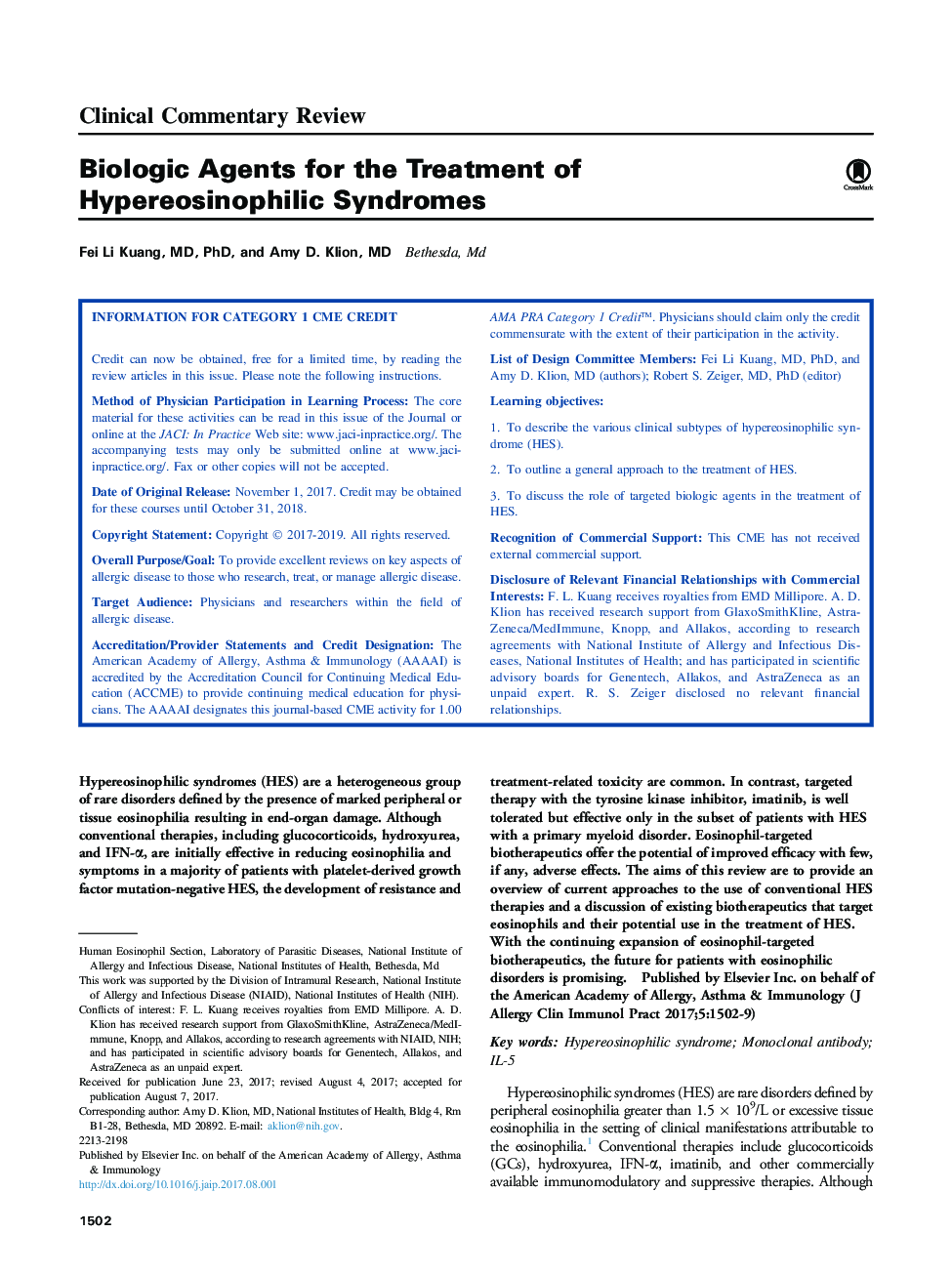| Article ID | Journal | Published Year | Pages | File Type |
|---|---|---|---|---|
| 8714630 | The Journal of Allergy and Clinical Immunology: In Practice | 2017 | 8 Pages |
Abstract
Hypereosinophilic syndromes (HES) are a heterogeneous group of rare disorders defined by the presence of marked peripheral or tissue eosinophilia resulting in end-organ damage. Although conventional therapies, including glucocorticoids, hydroxyurea, and IFN-α, are initially effective in reducing eosinophilia and symptoms in a majority of patients with platelet-derived growth factor mutation-negative HES, the development of resistance and treatment-related toxicity are common. In contrast, targeted therapy with the tyrosine kinase inhibitor, imatinib, is well tolerated but effective only in the subset of patients with HES with a primary myeloid disorder. Eosinophil-targeted biotherapeutics offer the potential of improved efficacy with few, if any, adverse effects. The aims of this review are to provide an overview of current approaches to the use of conventional HES therapies and a discussion of existing biotherapeutics that target eosinophils and their potential use in the treatment of HES. With the continuing expansion of eosinophil-targeted biotherapeutics, the future for patients with eosinophilic disorders is promising.
Keywords
Lymphocytic variant HESL-HESEGIDFDAEosinophilic gastrointestinal disorderIL-5RIL-5EoEAECEGPAPDGFRIL-5 receptorMonoclonal antibodyHESabsolute eosinophil countintravenouslysubcutaneouslyFood and Drug AdministrationHypereosinophilic syndromeSiglecHypereosinophiliaeosinophilic granulomatosis with polyangiitisGlucocorticoidplatelet-derived growth factor receptoreosinophilic esophagitis
Related Topics
Life Sciences
Immunology and Microbiology
Immunology
Authors
Fei Li MD, PhD, Amy D. MD,
